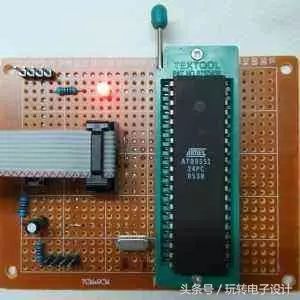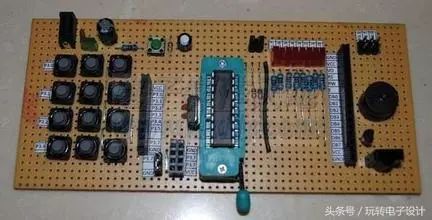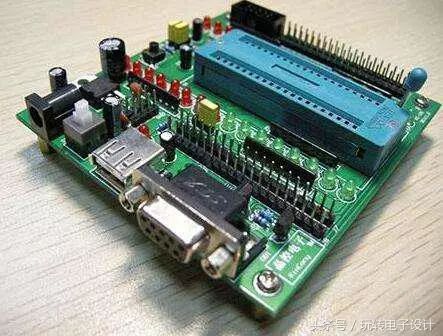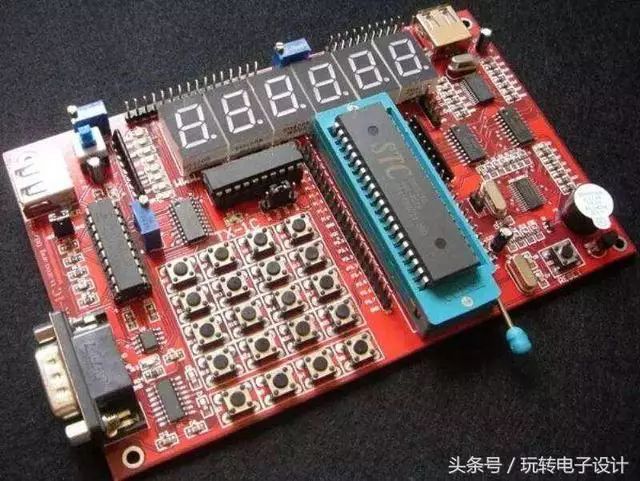Microcontroller learning methods and steps
There are four motives for learning a single-chip microcomputer: one is to learn for interests and hobbies; the other is to learn for a professional; third is to learn for a job; and fourth is to be forced to learn at work. Regardless of the motive, due to the differences in the majors and the differences in the basics of electronics, different learning methods may be adopted for different people. According to the author's personal learning experience and the experience of teaching apprentices, I propose the author's learning methods and procedures. .
The first step: basic theoretical knowledge learning
Basic theoretical knowledge includes analog circuits, digital circuits, and C language knowledge. Analog circuits and digital circuits are abstract disciplines, and it takes time and effort to learn them well. Before you learn the MCU, if you think that the analog circuit and digital circuit foundation are not good, don't rush to learn the MCU. You should first review the learned analog circuits and digital circuit knowledge to strengthen the foundation for learning MCU. Otherwise, your MCU learning path will not only be very difficult and long, but it may also stop halfway.

I always believe that the solid foundation of electronic technology is the key to learning a good microcontroller, a direct impact on the speed of microcontroller learning. Some students think that the MCU is very difficult, the more complicated it is, the more it can be learned. Some classmates seem to understand when they read the book, but it is a mess to move their hands. The reason is that the basics of electronic technology have not been played well, and they are first puzzled by surface knowledge.
Microcontrollers are digital circuits whose concept, terminology, hardware structure and principle all originate from the digital circuit. If the digital circuit is solid, the complex MCU hardware structure and principle can be easily understood, and the first step of learning can easily be taken. Self-confidence will also be established. On the contrary, the foundation is not good, and this one can't understand it. It also makes it difficult to understand. If you think MCU is very difficult, you should put down MCU teaching materials first, relive digital circuits, find out the trigger, register, gate circuit, COMS circuit, timing logic and timing diagrams, and system conversion and other theoretical knowledge. After understanding this knowledge, look at the structure and principle of the SCM again. I think you will realize it and gain confidence.
Analog circuit is the most basic subject of electronic technology. She let you know what is the resistance, capacitance, inductance, diodes, transistors, field effect transistors, amplifiers, etc. and their working principle and role in the circuit. This is learning electronic technology. Basic knowledge that must be mastered. It is generally learned analog circuits before learning digital circuits. The solid analog circuit foundation not only makes it easy for you to understand circuits designed by others, but also makes your designed circuit more reliable and improves product quality.
C language knowledge is not difficult, people without any programming basis can learn, in my opinion, junior high school students, high school students, secondary school students, college students can learn. Of course, people with good mathematics and good logical thinking are relatively easy to learn. The knowledge that C language needs to master is then 3 conditional statements, 3 loop statements, 3 jump statements, and 1 switch statement. Do not underestimate these 10 statements, the complexity of the logic formed by their combination should be more complicated. When you learn, you need to learn one statement and one sentence. After learning all these key sentences, I believe that your C foundation has been established.
When the foundation is laid, you will feel that the MCU is no longer difficult to learn, and that the more you learn, the more you work. When the SCM implements instructions in accordance with your logical thinking and algorithm to achieve the desired control effect, the sense of achievement will make you confident, spend the night to renew, and forget to eat into the world of SCM. It can be said that a solid foundation of electronic technology and C language foundation can enhance the confidence of learning microcontrollers and master the microcontroller technology.

The second step: SCM practice
This is the process of truly learning the SCM. It is both exciting and exhausting. It is both frustrating and unpleasant. It is both lonely and enriching. It is both irritating and gratifying. It has both a sense of loss and achievement. sense. Only the people who have studied have a deep understanding of the bittersweetness. The ideology must have the determination to study assiduously. There must be a complete set of learning and development tools on the hardware. The software should pay attention to the combination of theory and practice.
1. Determined to study hard
First of all, clarify the purpose of learning. Seriously answer two questions first: What do I learn from the microcontroller? How long does it take to learn it? This is your motivation for learning the microcontroller. Without motivation, I don't think you can hold on for long.
Second, correct learning attitude. SCM learning process is boring, lonely and lonely process. We must know that there is no short cut for learning knowledge. Only step-by-step, down-to-earth, and step-by-step can we learn real skills. Again, we need more brain work. The study of SCM is very practical, and it is a technical discipline that focuses on hands-on operation. Do not practice you are not learning microcontroller.
Finally, open-minded exchanges. Everyone in the learning process of the SCM encounters numerous problems that cannot be solved. You need to ask people who are experienced to have an open mind. Otherwise, blindly groping about yourself will take many detours and waste a lot of time.
2. A complete set of learning and development tools
It is costly to learn MCU. Must have a computer, a MCU development board (if the development board can not directly download the program code, then you also need a programmer), a video tutorial, a microcontroller teaching materials and a C language teaching materials. The computer is used to compile and compile the program, and download the program code to the MCU; the development board is used to run the MCU program to verify the actual effect; the video tutorial is to teach you the use of the MCU development environment, microcontroller programming and debugging. For MCU beginners, video tutorials must look at, or else, even if the textbook read several times, still do not know how to start, especially in colleges and universities MCU teaching materials, after learning, the face of real MCU may still Do nothing; SCM textbooks and C language textbooks are theoretical learning materials, and are for reference. Do not use the Protur software to simulate and debug in order to save costs without development board, which is no different from the paper.

3. We must pay attention to the combination of theory and practice
The theoretical knowledge of single-chip C language programming is not esoteric, and it can be understood simply by reading books. But when it comes to actual programming, it's not that simple. The formation of a program requires not only C language knowledge, but also more integration into your personal programming ideas and algorithms. Programming ideas and algorithms determine the pros and cons of a program, which is a big problem in the programming of SCM. Only when it is actually written, can it be realized. Whether or not a program can operate normally according to your wishes depends on whether your ideas and algorithms are correct and reasonable. If the program is not normal, it will be debugged repeatedly (check, modify ideas and algorithms) until successful. This process is time-consuming, brain-fighting and exhausting. Those who are not strong-willed are often stumbling over here.
Learning to write programs should be based on the following process and the results will be better. See the subject of the program first try to conceive of their own programming ideas, and then look at the code in the textbook or video tutorial to study people's programming ideas, pay attention to differences with their own ideas; then follow the people's ideas to write this program , Comprehend the role of each of these statements; Try to modify the program in accordance with your own thinking, compare the performance of the program, understand the mystery. Each routine insists on learning in accordance with this process. You will soon find the feeling of programming, take its essence to its dross, and over time will form your unique programming ideas. Of course, at first, looking at other people's program source code is like looking at the Bible. Just look at it and see if you don't understand keywords and statements. As long as we can persist, learning will do more with less.
In practice, we must not only learn other people's routines, but also improve and expand on other people's programs to make the program more powerful. At the same time, you must also know how to check the reliability of other people's routines by reading the read and write timings of the chip commands and data in the DATA SHEET. If you think the routine is not reliable, modify it to become your own. program. Not only that, he himself should always find some projects to consolidate what he has learned and accumulate more experience.
The third step: SCM hardware design

When writing your own programs and reading other people's programs can find problems, it shows that your microcontroller programming level is quite good. The hardware that should be studied next. The hardware design includes circuit principle design and PCB board design. Learning to do hardware is more troublesome than learning to do software. It costs more and lasts longer. However, the ultimate goal of learning microcontroller is to do product development ---- software and hardware to form a complete control system. Therefore, doing hardware is also a must-learning content for learning microcontroller technology.
The circuit principle design involves the application of various chips, and the design of these peripheral circuits of the chip, the typical application circuit and the connection with the MCU can all find the answer in the chip data manual (DATASHEET), the premise is to understand the data in English. manual. Otherwise, copying the designs of others will always fall behind others, and the products you make will have no creativity. The first-hand data in the field of electronic technology (DATASHEET) are all in English. From the first-hand data, the knowledge you obtain may be in the absence of textbooks, network documents, and extracurricular reading materials. Although some materials are also written on the basis of DATASHEET, the contents are not comprehensive, and even there are omissions and errors in translation. Of course, reading DATASHEET requires a certain amount of English reading ability, which is also a stumbling block to the promotion of SCM learners. Good English reading ability allows you to travel freely in the ocean of microcontroller technology knowledge.
It is relatively simple to do PCB board. As long as you know how to use Protel software or AltimDesigner software, there is no problem. But it takes a lot of effort to make the layout of the board beautiful and the wiring reasonable.
Skilled microcontroller C language programming, use Protel software or AltimDesigner software design PCB board and have a certain ability to read English, you are a case of strong and strong single-chip master.
Toolkits For Cutting Mahine and Cutting Materials
It is suitable for the blade of the Screen Protector Cutting Machine and the tools for installing the Screen Protection Film.
If you want to learn more about Accesseries For Cutter,Screen Protector Cleaning Tool, Cutting Blade, Cell Phone Scraper Tool, Tool Kit, Cutting Head Parts please click "Product Details" to view Accesseries For Cutter,Screen Protector Cleaning Tool, Cutting Blade, Cell Phone Scraper Tool, Tool Kit, Cutting Head Parts parameters, models, pictures, prices and other information .
Whether you are a group or an individual, we will try our best to provide you with accurate and comprehensive information about Accesseries For Cutter,Screen Protector Cleaning Tool, Cutting Blade, Cell Phone Scraper Tool, Tool Kit, Cutting Head Parts!Accesseries For Cutter,Screen Protector Cleaning Tool, Cutting Blade, Cell Phone Scraper Tool, Tool Kit, Cutting Head Parts
Shenzhen Jianjiantong Technology Co., Ltd. , https://www.jjthydrogelprotector.com